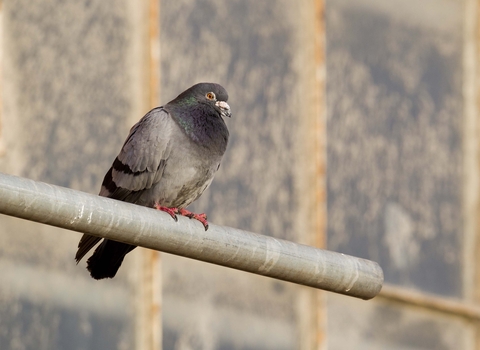
©Bertie Gregory/2020VISION
Rock dove
The wild rock dove is the ancestor to what is probably our most familiar bird - the feral pigeon, which is often found in large numbers in our towns and cities.
Scientific name
Columba liviaWhen to see
January to DecemberSpecies information
Category
Statistics
Length: 31-34cmWingspan: 66cm
Weight: 300g
Average lifespan: 3 years
Common. Classified in the UK as Green under the Birds of Conservation Concern 5: the Red List for Birds (2021).
